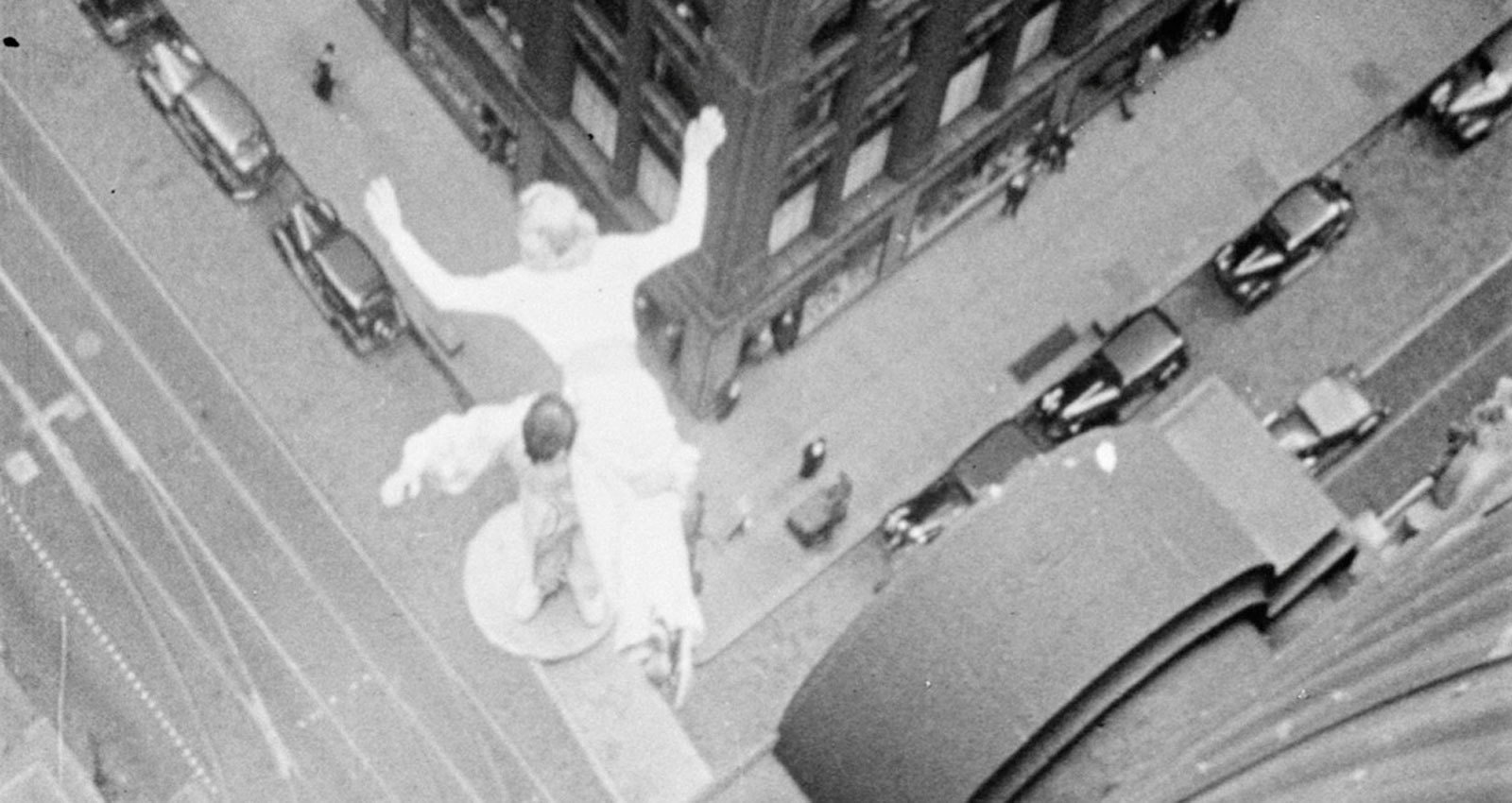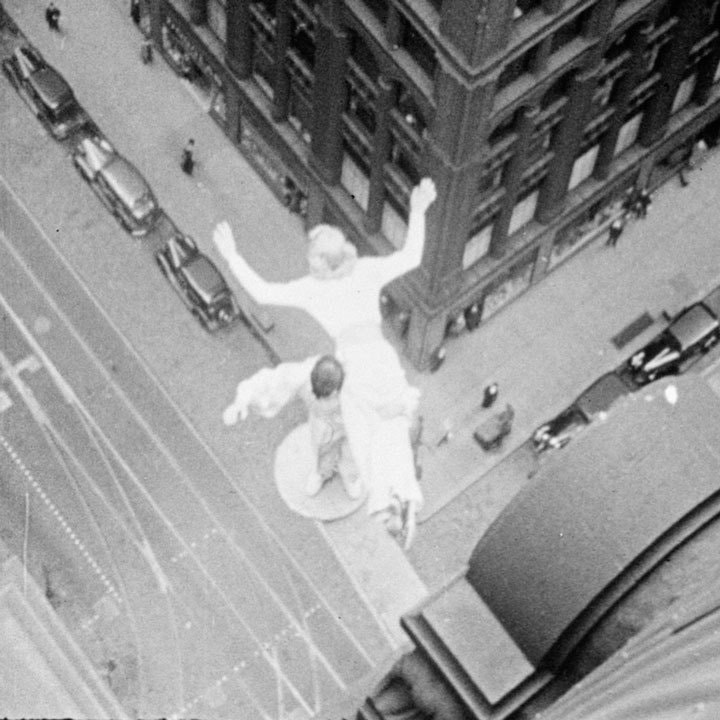A retrospective of Bruce Conner—a key American artist and one of the pioneers of postwar avantgarde film.
TEN SECOND FILM
“When Conner was commissioned to design the poster for the 1965 New York Film Festival he constructed TEN SECOND FILM, which he intended to act as its television commercial and to precede the film programs in the theater. It was a public 'leader' in that it was composed, like the poster, of a series of ten strips of film (each 24 frames long) of count-down leader, seen as fundamental heraldry of motion picture exhibition.”—Anthony Reveaux
One reason the festival gave for rejecting the film was it "went too fast." It travels the right speed: 24 frames per second. 240. Count 'em.
USA, 1965. 10 sec.
A MOVIE
With A MOVIE, Conner launched a lifelong celebration of moving images alongside his other artistic practices of collage, assemblage, drawing, and photography. He reconceived mid- century notions of cinema itself, as A MOVIE simultaneously explores the very nature of cinema and montage in the modern era. Comprised of discarded 16mm films purchased at flea markets or scavenged from camera shops, A MOVIE has been described by many as the first contemporary “found footage film.” Conner crafted this work with care and absolute precision, qualities that would define his entire oeuvre in diverse media. A MOVIE orchestrates a virtual symphony of disasters, car crashes, explosions, war, famine, as well as serene moments of grace—a tightrope act, a plane floating through clouds, light reflected on water. Although seemingly random in its sequence of imagery, A MOVIE abstractly yet deftly moves the viewer through a wide range of human experience and emotion. With Respighi's “Pines of Rome” as the soundtrack, Conner established a visual poetry that combines music and image. Conner would refine this marriage of sight and sound over the next several decades in other films and lay the groundwork for the music video we know today.
USA, 1958, 12 min.
COSMIC RAY
Before music videos and rapid-fire editing pervaded popular culture, seminal avant-garde filmmaker, Bruce Conner (1933–2008), pioneered techniques of vertical montage and subliminal messaging with this second film, COSMIC RAY. With thousands of images precisely cut to Ray Charles' hit song “What'd I Say” (1959), Conner created an explosive homage to the blind musician.
USA, 1961, 4 min.
MARILYN TIMES FIVE
Created from 1968 to 1973, MARILYN TIMES FIVE is composed of clips from The Apple Knockers and the Coke, a 1948 girlie film featuring actress and Marilyn Monroe look-a-like Arline Hunter. As Monroe's song, “I'm Through with Love” plays five times, footage of Hunter seductively posing for the camera is interrupted by fragments of black leader. As with REPORT, Conner edits the film to arouse and frustrate the viewer's desire to see. Extensive repetition, abrupt abbreviations, gradually protracted excerpts, and non-linear sequencing reveals film to be merely a subjective construct—one which commodifies celebrity and exploits women. In total, the object of desire in Marilyn is mediated by so many factors—from Marilyn Monroe's death and the age of the original film to the lethargic pace and absence of narrative closure in Conner's version—that is transmogrified into something truly strange, at once erotic and deadened.
USA, 1973, 13 min.
LOOKING FOR MUSHROOMS (Beatles version)
“LOOKING FOR MUSHROOMS (1959–1967) is a visionary travelogue documenting a psychedelic ‘trip’ through rural Mexico and urban America. The film combines street views of San Francisco that Conner and Bob Branaman shot in the late 1950s with scenes of rural Mexico that Conner shot during a series of ‘mushroom-hunting’ excursions between 1961 and 1962, while he and Jean Conner were living in Mexico City. On at least one of these trips, the Conners were joined by Timothy Leary, the ex-Harvard professor and a leading proponent of psychedelic drugs. Whereas an earlier version of the film was silent and played on a loop, in 1967 Conner added a psychedelic rock 'n' roll soundtrack, The Beatles' ‘Tomorrow Never Knows’ off their 1966 album Revolver. The lyrics to the song were famously inspired by Leary, Ralph Metzner, and Richard Alpert's 1964 book The Psychedelic Experience: A Manual Based on the Tibetan Book of the Dead, which advised those under the influence of psychedelics to ‘turn off your mind, relax, float downstream.’ Arguably among his most hypnotic and visually arresting films, Conner later noted that LOOKING FOR MUSHROOMS (along with COSMIC RAY) was often rented by advertising agencies who were presumably interested in his use of rapid-fire editing and strobe to generate psychedelic effects and generate subliminal messages.”—Dr. Johanna Gosse, Art Historian
USA, 1967, 3 min.
REPORT
Pioneering experimental filmmaker Bruce Conner first emerged on the Californian scene with his found art assemblages in the late 1950s. He continued to work in sculpture, painting, and collage, but it was his assemblage films that would become his lasting trademark. His monumental film, REPORT(1963–1967), was recently digitally restored in 2017. Conner deconstructs the repetitive imagery and messages from media coverage of the Kennedy assassination, fabricating an image track out of the fragments of the paltry documentary footage. The film is divided into two unequal parts, a longer, first section which Conner has called “the death of Kennedy” and an “epilogue” that imaginatively unpacks the Kennedy myth. It is also an astounding exposé of the media's modes of creating meaning, of constructing messages, and ultimately of controlling information. REPORTpresents an uncanny premonition of our current crisis of “fake news” and the power of social media.
USA, 1967, 13 min.
CROSSROADS
Operation Crossroads was the first two of twenty-three nuclear weapons tests the United States conducted at Bikini Atoll between 1946 and 1958. Both tests involved the detonation of a weapon with a yield equivalent to twenty-three million tons of TNT, the same as the atom bomb dropped on Nagasaki. More than seven hundred cameras, and approximately five hundred camera operators surrounded the test site. Nearly half the world's supply of film was at Bikini for the tests, making these explosions the most thoroughly photographed moment in history. Original Music by Patrick Gleeson and Terry Riley.
“Conner found a cataclysmic beauty in the declassified National Archives footage of the first underwater atomic bomb test ‘Baker Day,’ which was conducted on Bikini Atoll on July 25, 1946. Twenty-three shots of the same explosion—at differing speeds and distances, from air, sea, and land—combined with a mesmerizing dual score by Patrick Gleeson and Terry Riley to make of the destruction a kind of Cubist cosmic sublime.” —Josh Siegel, Associate Curator, Department of Film, The Museum of Modern Art
USA, 1976, 37 min.


